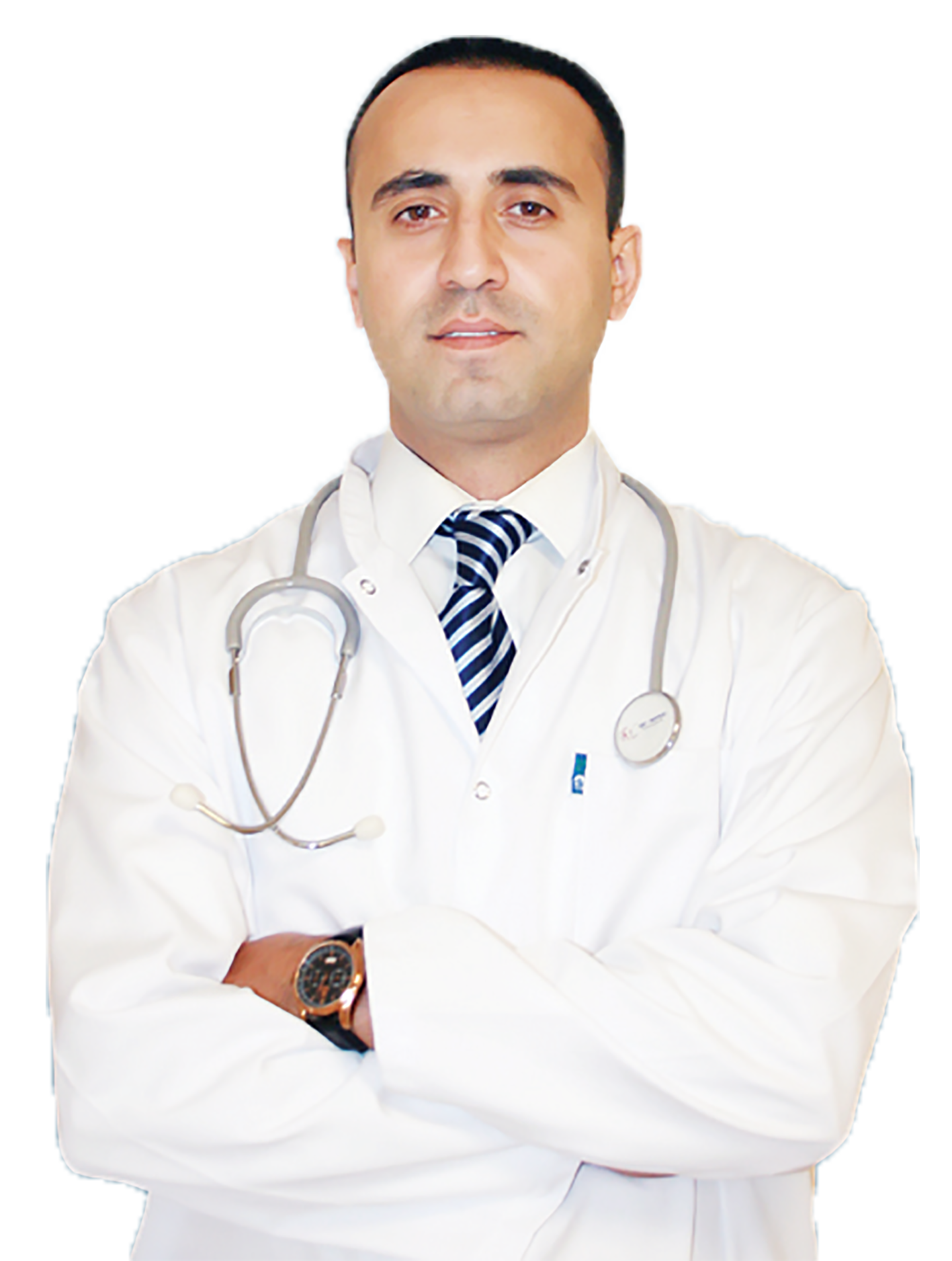CARDIOLOGY
_1691069257.png)
Heart diseases can be seen in all age groups from young to old ages and in both sexes. Especially those with a family history of heart disease should undergo frequent medical check-ups as they are more at risk than others. Procedures for the diagnosis, treatment and follow-up of heart diseases are carried out by internal medicine units called Cardiology.
In our Cardiology Clinic, diagnosis and treatment methods of cardiovascular diseases are safely applied.
Within the Cardiology Clinic; Coronary Angiography Laboratory where coronary angiography, right heart catheterisation, peripheral angiography (renal, carotid, cerebral, lower and upper extremity), electrophysiology and ablation procedures are performed, Coronary Intensive Care Unit, There is an angio observation unit where catheter and angiography patients are followed up, cardiology service, cardiology outpatient clinics and outpatient laboratory where non-invasive examinations (ECG, effort test, rhythm and blood pressure holter) are performed.
Diseases diagnosed and treated in the Cardiology Department:
Heart Attack
Coronary Insufficiency
Heart Failure
Heart Rhythm and Conduction Disorders
Heart Valve Diseases
Peripheral Vascular Diseases
Aortic Vessel Diseases
Hypertension
Hypercholesterolaemia
Congenital Heart Diseases
Disease Risk and Screening,
Coronary artery diseases:
Coronary artery disease, one of the most common cardiovascular diseases, develops as a result of atherosclerosis (arteriosclerosis) of the coronary arteries, which are the vessels supplying the heart, or blockage by the accumulation of fatty plaques in the vessels due to high cholesterol. This leads to insufficient oxygen supply to the heart muscle and, in later stages, to the development of heart failure. In addition to the use of medication, coronary angioplasty, stenting, minimally invasive techniques and robotic surgery, bypass applications are included in the treatment.
Heart attack (infarction)
A heart attack, medically known as myocardial infarction, is an acute condition characterised by sudden and severe pain and tightness in the chest. In the formation of heart attack, in which early intervention is vital, factors such as chronic smoking, diabetes, hypertension, as well as structural disorders of the heart play a role. Patients with a heart attack require urgent intervention.
Heart failure
Heart failure develops as a result of damage to the heart due to cardiovascular diseases and the inability to pump the required amount of blood to the body. Congenital or acquired structural defects in the heart, prolonged high blood pressure, diseases of the heart valves and damage to the heart muscle caused by a heart attack are among the causes of heart failure. The treatment includes various drug derivatives, the use of pacemakers and support devices, surgical treatment methods and heart transplantation.
Heart rhythm disorders (arrhythmia)
An irregular heartbeat or the heart beating differently than it should is called arrhythmia or arrhythmia. This condition is characterised by the heart beating too fast (tachycardia) or too slow (bradycardia), fainting and palpitations. Arrhythmia patients can be treated with medication, electrical treatments such as catheter ablation or surgical operation techniques specially developed for arrhythmia.
Heart valve diseases
Valvular heart diseases, which are congenital in the heart or develop later due to factors such as genetic factors, old age, severe infection, are characterised by narrowing of the heart valves or leakage of blood. People with valve disease sometimes do not feel any symptoms for years, while in some people, the disease may manifest itself with symptoms such as constant weakness, palpitations, feeling of congestion and rapid fatigue. Clinical and surgical applications such as valve repair or replacement, transcatheter aortic valve replacement (TAVI), transcatheter valve therapy are used in the treatment.
Aortic vessel diseases
Aortic aneurysm (enlargement), rupture of the vessel layers (dissection), occlusion or stenosis of the vessel are the most common aortic diseases. In aortic diseases detected in the initial stages, only medication may be preferred, while in more advanced cases, angiography, stenting and surgical repair treatments may be required.
Peripheral vascular diseases
Peripheral vascular disease is a disease that develops in the form of obstructed blood flow to the arms, legs and organs due to blockages in the arteries caused by atherosclerosis (arteriosclerosis). The treatment of this disease, which can occur due to high cholesterol, hypertension, smoking, diabetes, obesity or genetic predisposition, includes the use of medication and surgical interventions such as bypass, endarterectomy and stenting.
Arteriosclerosis (atherosclerosis)
Atherosclerosis, which is very common and plays a role as a triggering factor in the development of many serious heart diseases, develops when the vessel hardens and loses its flexibility due to cholesterol accumulation in the vessel walls. The atheroma plaques that form inwards in the hardened vessel walls may cause narrowing and blockage of the vessels over time, resulting in the development of serious acute conditions such as heart attack and problems that may lead to impairment of organ functions. Treatment includes medication, lifestyle changes and nutritional therapy as well as surgical interventions such as minimally invasive surgery and bypass.
Hypertension
One of the most common chronic diseases in our country and in the world is hypertension. In adult individuals, systolic blood pressure should be below 130 mmHg and diastolic blood pressure should be below 80 mmHg. If the blood pressure is constantly above these values, it is called hypertension and this condition can lead to the formation of many diseases in the long term. For this reason, blood pressure should be reduced to normal ranges and kept under control with medical nutrition therapy and, if necessary, medication.
Hyperlipidaemia / Dyslipidaemia
The presence of cholesterol and other blood lipids above the required levels in the blood is a risk factor for the formation of many cardiovascular diseases, especially atherosclerosis. High levels of various lipid types in the blood are called hyperlipidaemia, while high levels of total cholesterol, LDL and triglycerides in the blood and low levels of HDL, also called good cholesterol, are called dyslipidaemia. Since both conditions may cause major adverse effects on health in the long term, cholesterol and fat intake should be balanced with nutritional therapy, and drug treatment should be applied when deemed necessary by the physician.
Coronary Angiography Laboratory ;
Cardiac catheterisation:
Cardiac catheterisation and angiography is a diagnostic method. It is based on the principle of visualising the heart cavities and coronary arteries during the administration of contrast material (a kind of medical dye) and taking moving films using "X" rays. The data obtained are very important in guiding the treatment and are the main determinant for the choice of treatment strategy in most patients. Thanks to current technological conditions and knowledge, the success rate of cardiac catheterisation procedures is over 99%.
Coronary angiography is usually performed when there is a strong clinical suspicion of coronary heart disease or for noninvasive evaluation, such as an abnormal effort test. The aim is to determine the extent and severity of coronary stenosis and to determine the treatment option (balloon/stent, by-pass, medical therapy).
Coronary Angiography Laboratory also includes
-Diagnosis and treatment of peripheral (such as kidney, brain and carotid artery) vascular diseases (balloon/stent),
Temporary, permanent pacemaker and ICD (life-saving shock device) implantation,
-Installation of a three-chamber pacemaker (CRT) in some heart failure patients,
-Diagnosis and treatment of congenital heart diseases (such as a hole in the heart),
-Electrophysiological studies and ablation (permanent prevention of rhythm disorders) are also performed.
Echocardiography ;
It is a diagnostic method that easily detects heart failure, heart valve stenosis or insufficiency, heart enlargement, congenital hole in the heart, aortic enlargement, presence of clots in the heart by providing information about the condition of the pump function of the heart, the structure of the valves and structural abnormalities of the heart.
Effort Test;
It is used in the detection of vascular occlusion by taking a series of heart radiographs at certain speeds and slopes on the treadmill. Abnormalities that cannot be detected in the heart radiograph taken at rest are observed.
Rhythm Holter ;
It is the recording of heartbeats with a device carried for 24 hours and then evaluated in a computer environment. With this device, palpitation attacks and heart pauses that do not appear on the heart radiograph are observed.
Blood Pressure Holter ;
It is a device that is worn on the patient for 24 hours and measures and records blood pressure every 15 or 30 minutes. Thus, it is used in the diagnosis of patients with false blood pressure elevations, sudden rising and sudden falling blood pressure attacks in the hospital environment and to monitor the response to drug treatment.
Electrophysiological Study and Ablation ;
During the application of electrophysiological study, catheters are inserted into the heart cavities and recordings are taken from different points in the heart or stimulation is given to create abnormal rhythm. If an abnormal rhythm or a pathway other than the normal conduction system of the heart is detected, this conduction can be destroyed by ablation method.





